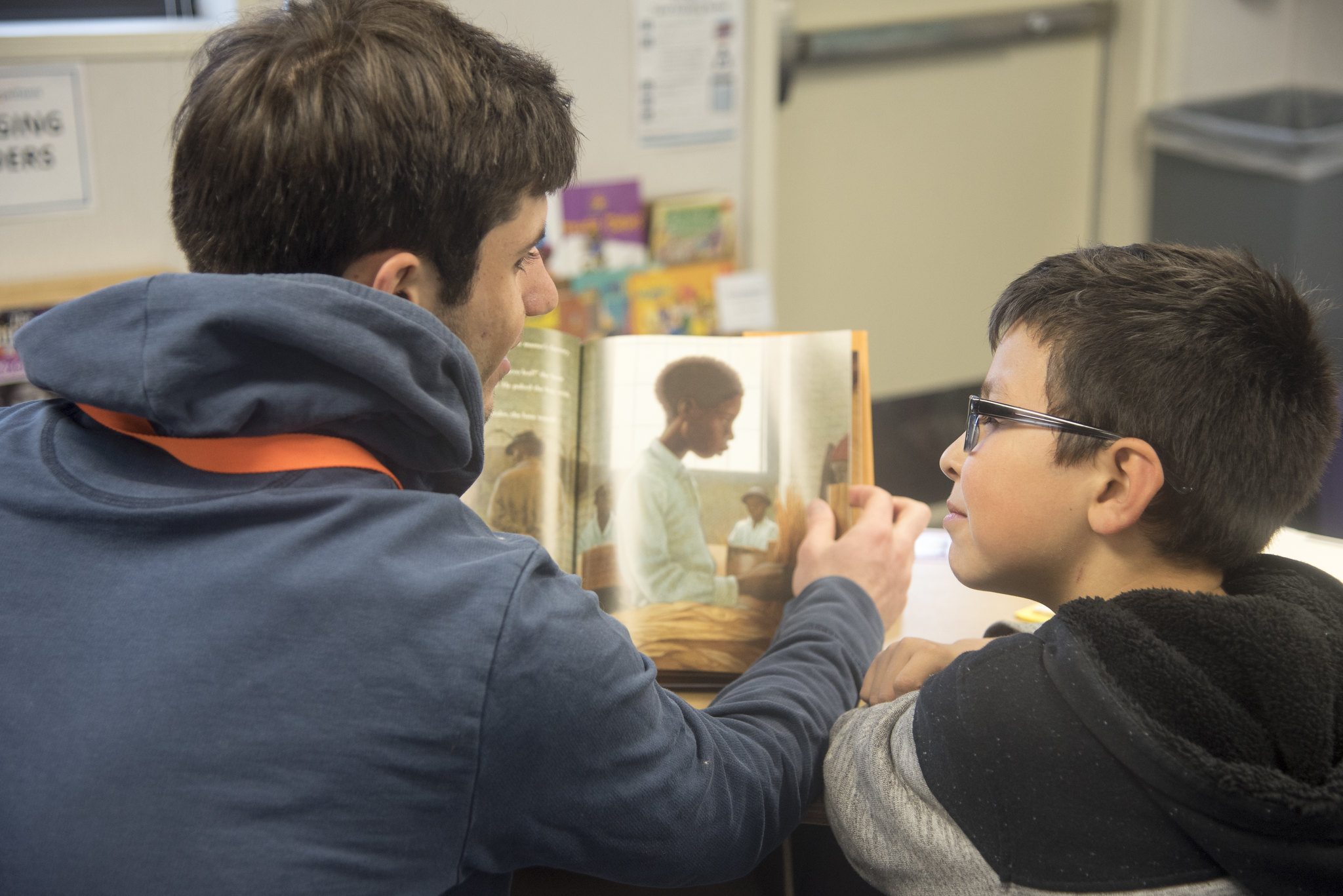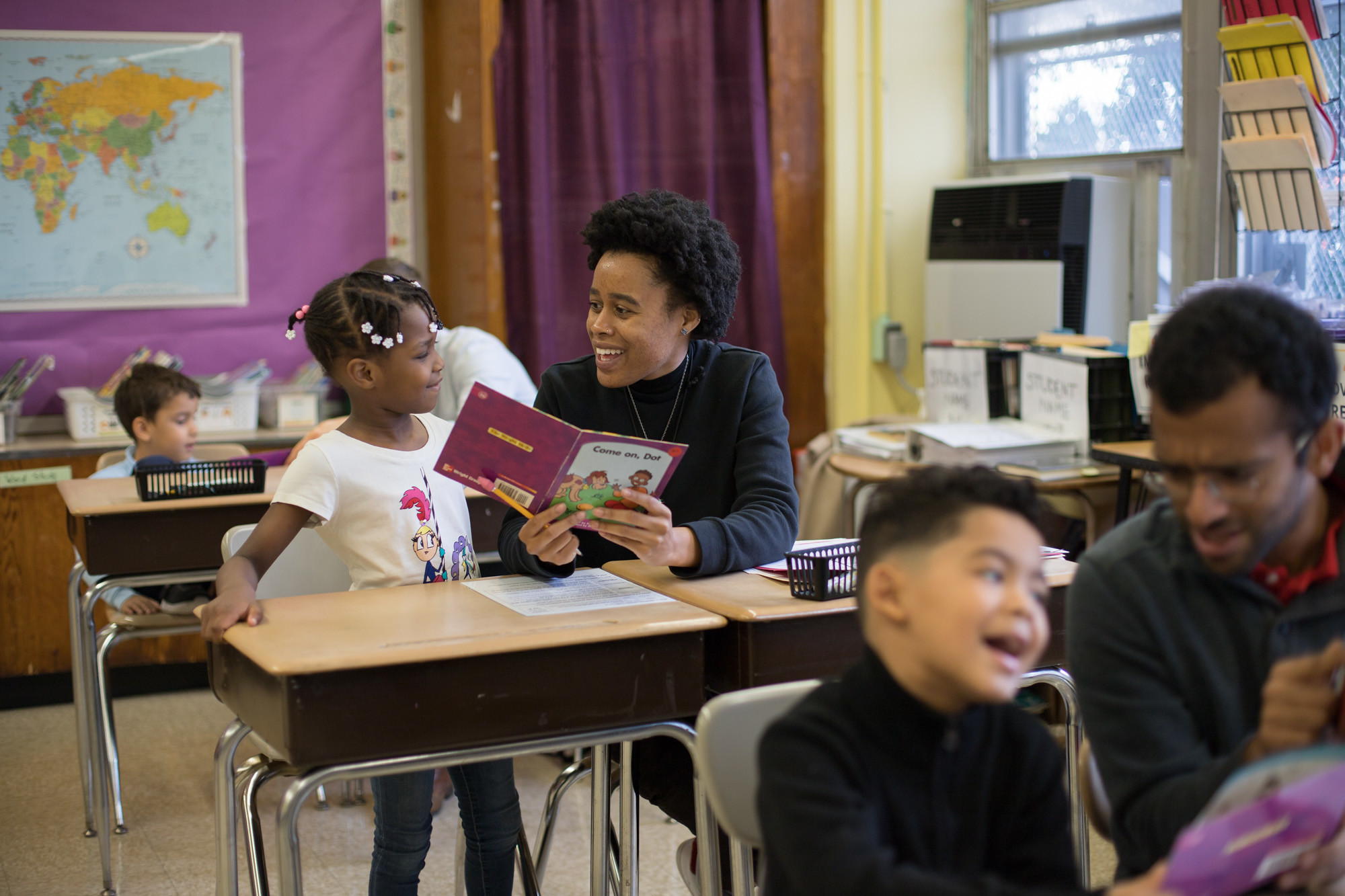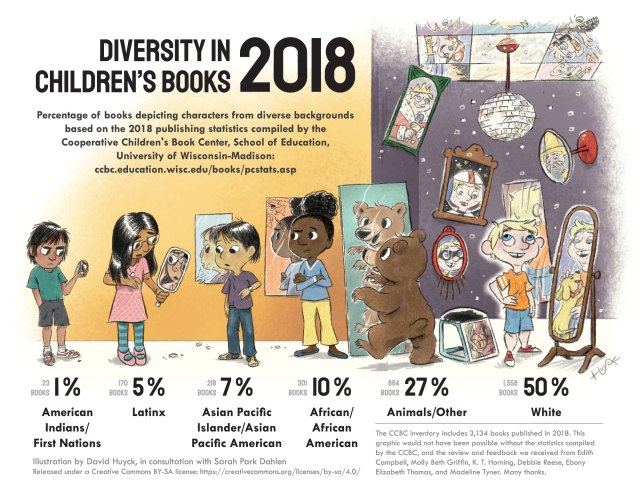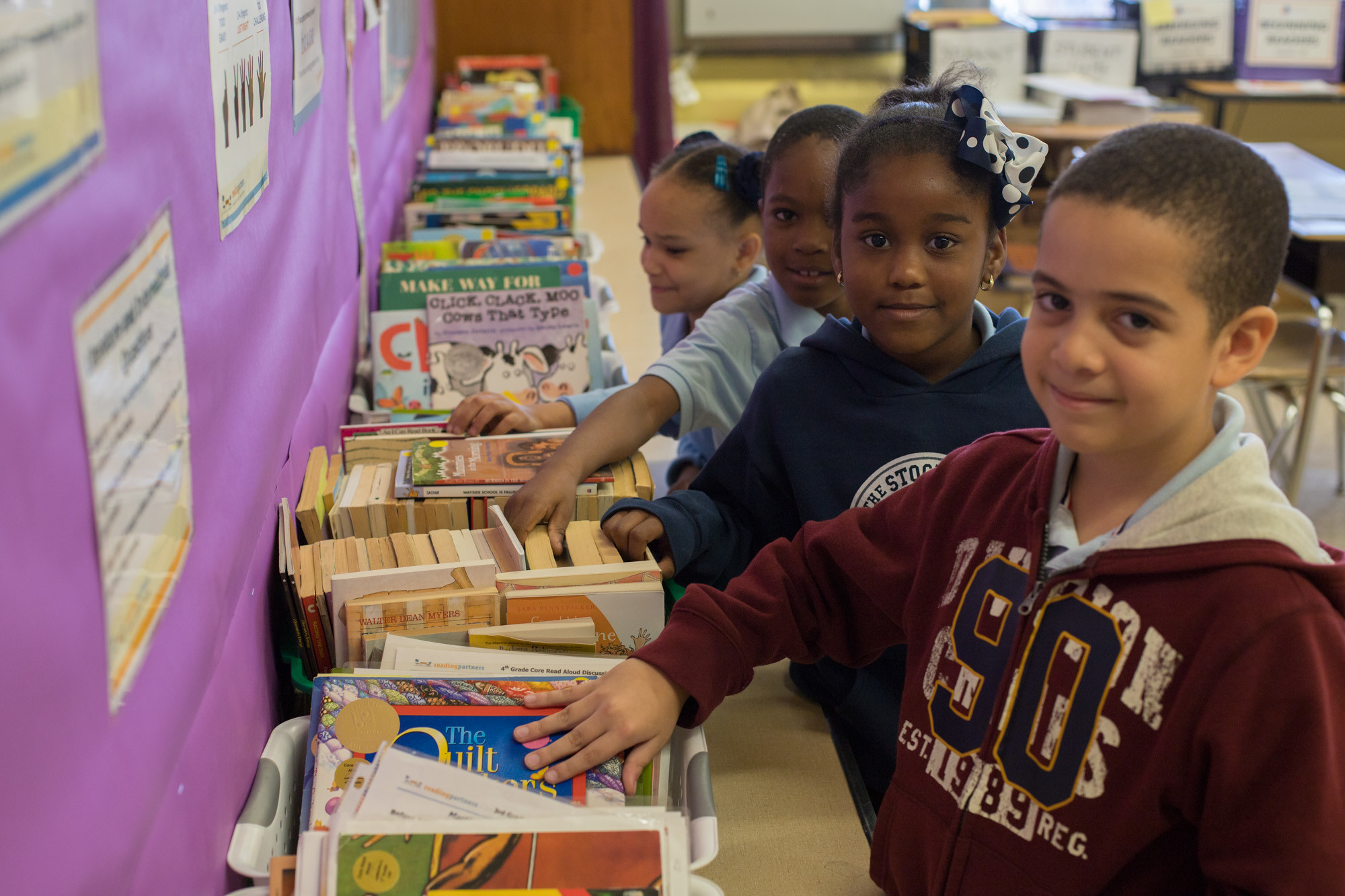
The danger of the single story and underrepresentation in kids’ books
November 18, 2020
Distance tutoring coordinator, Reading Partners Baltimore
Did you know? There were more animals represented in children’s literature than African American, Asian, Latinx, and Native American characters combined in 2018.
The lack of diversity and representation in children’s book characters is alarming and incredibly problematic. When children of color don’t see themselves in books it can negatively impact their self-esteem and impressions of the world.
In a nation full of rich cultural, racial, and experiential diversity, our books should reflect that diversity rather than limiting the vast majority of children’s books to the experiences of white children. All children deserve to see both themselves and children with other identities represented equally in books. This promotes an understanding of shared humanity and encourages empathy and cultural responsiveness.
Single stories
“Stories matter. Many stories matter. Stories have been used to dispossess and to malign. But stories can also be used to empower, and to humanize.” – Chimamanda Ngozi Adichie
In her viral TED Talk, “The Danger of a Single Story,” Nigerian writer Chimamanda Ngozi Adichie reflects on coming to college in the US and meeting a roommate who only knew a single story about Africans. That they were poor and desperate. The roommate could not fathom an African who was middle class, fluent in English, able to use a stove, and so on.
Adichie argues that when there’s only a single story about a group of people, it robs them of their dignity. The single story reduces people, rendering them incomplete, flat, one-dimensional. As a result, it becomes difficult to recognize equal humanity in the characters of a single story.
One way that children can learn about groups of people is through the pages of children’s books. Just as real people have multiple stories, so too should children’s book characters. If we reduce characters to stereotypes or reduce them to traditional foods, festivals, folklore, fashion, or famous people (the five Fs), we run the risk of telling a single story: the exotic, the other.
Yes, we should celebrate diversity, and highlighting uniqueness in culture is beautiful and important. But if children’s books do not also focus on our shared humanity, they will not help children develop understanding, empathy, and cultural responsiveness. To avoid the single story pitfall, our children should read books about all kinds of characters, with all kinds of backgrounds and identities, having all kinds of experiences.
Underrepresentation in children’s literature
The image below shows data from the Cooperative Children’s Book Center from 2018. The characters in children’s books were overwhelmingly white (50 percent). The second most common type of character was animals (27 percent). The remaining 23 percent included African/African American, Asian Pacific Islander/Asian Pacific American, Latinx, and American Indians/First Nations characters combined. There is immense underrepresentation of non-white characters in children’s literature.
The symbolism in the image below is worth noting. Because there are so many books with white characters, white children can see themselves as kings, astronauts, dancers, firemen, adventurers. The image shows the white child looking at many large mirrors with various possibilities. But when children of color read, they can rarely see themselves in stories. Their mirrors are impossibly small and often cracked.
(Source: Huyck, David and Sarah Park Dahlen 2019)
In a TEDx Talk titled “Missing Adventures: Diversity and Children’s Literature,” Brynn Welch argues that “children of color deserve to imagine themselves having the same range of ordinary and extraordinary experiences that white children get to imagine themselves having 90 percent of the time. White children deserve to see children of color having those experiences. Children do not deserve the stereotypes that we hand down to them, they deserve to start fresh.”
By actively working to promote inclusion in children’s literature, we can ensure that children of all identities can see themselves and others in the books they read. We go a long way towards fighting stereotypes and doing away with the single story. In turn, children will learn to see others as equals and work towards fairness.
What can you do?
Understanding the danger of underrepresentation and the single story is only the first step in promoting a diverse and inclusive literary world. Now, it’s time to take action. Here are a few options:
- Organize a book drive with only diverse books. Get started here.
- Seek out diverse books and add them to your home library. This blog outlines all of the “can’t miss” Own Voices books of 2020. Each book on the list was written by and about people in marginalized groups.
- Talk to the children in your life about the danger of a single story.
Resources
For more information on diversity in literature and other organizations dedicated to closing the representation gap in children’s literature, check out these additional resources.
- Exploring cultural diversity books for adults and kids
- Six steps to lead a cultural diversity read aloud
- Teaching diversity to our youngest generation
- We Need Diverse Books is a nonprofit organization that helps to “produce and promote literature that reflects and honors the lives of all young people.” Check out where to find diverse books here.
- Día is an initiative that commits to including and celebrating a variety of cultures in books every day, year-round. We celebrate it annually on April 30. Take a look at programming ideas and resources that focus on multicultural children’s books here.







